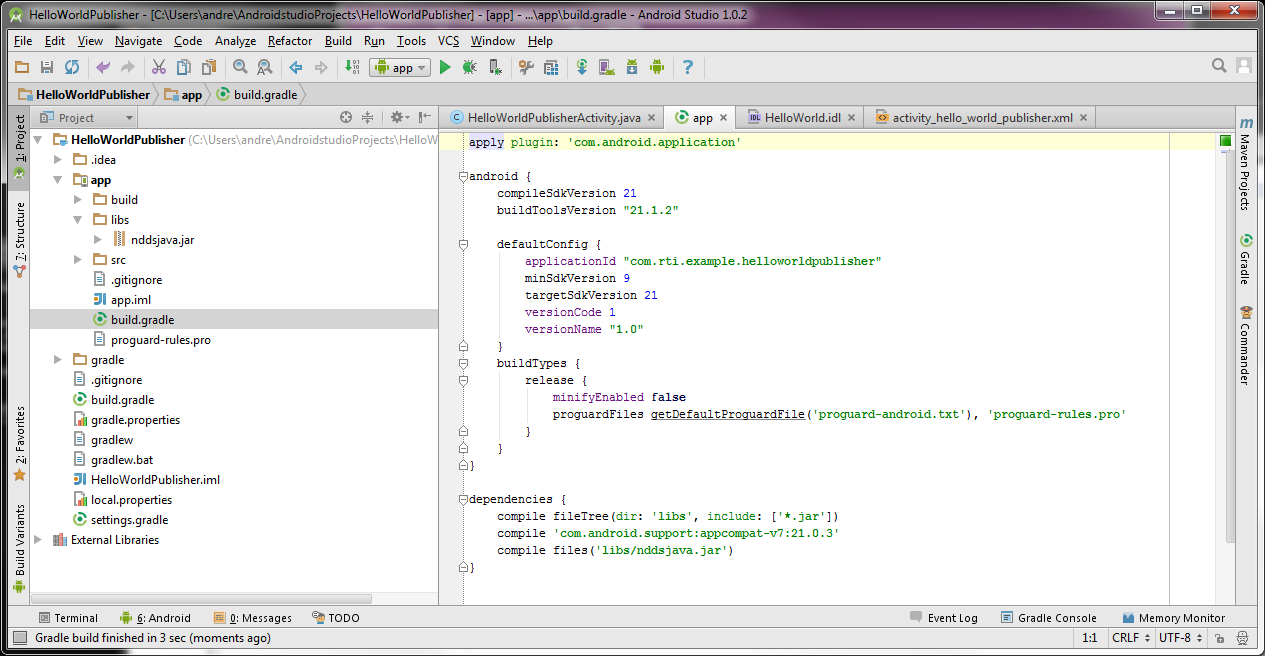
- #Android studio build apk with source code and binary apk#
- #Android studio build apk with source code and binary install#
- #Android studio build apk with source code and binary android#
- #Android studio build apk with source code and binary code#
#Android studio build apk with source code and binary code#
It also removes unused java code from dependencies. Packages and classes may have a long name but should not hinder efficiency. It obfuscates name of types, fields, methods where the original name doesn’t matter such that long names are replaced with short strings like a and b for efficiency. It optimizes your code in ways that don’t change the functionality but change the representation to make it more compact. You can check the package on pub.dev here.
#Android studio build apk with source code and binary android#
This is similar to downloadable fonts in native android development. Instead, they can be fetched once via HTTP at runtime, and cached in the app's file system. otf files do not need to be stored in your assets folder and mapped in the pubspec.yaml file. Instead of bundling fonts in-app, you may want to use the google_fonts package. Use Google Fontsįonts are a source of bloats for apps. Once done building your app, you should check your pubspec.yaml and remove libraries/packages which is/are not used. png Use Specific LibrariesĬalling packages not needed or used in our pubspec.yaml file should be avoided. When you are downloading system app icon from Google’s Material Design Icon Library, download.
#Android studio build apk with source code and binary apk#
One doesn’t need to worry about different device DPI’s and this also helps in reducing apk size. We should say welcome to vector drawables and bye to PNGs as they have a couple of benefits using them. You can do a quick google search for tools to compress your PNGs and JPGs. Whenever you have to use images in-app like say a walkthrough screen and you don’t want to call the images from an external host, you should compress your PNGs and JPGs as those of high quality will bloat up the app size. On the first launch of the app, the package fetches the image from the URL provided and caches it hence you get a cached image on subsequent use of the app hence these images don’t occupy download space as they are not bundled in-app. Instead of bundling the image assets in-app, one could host the images on an external service like firebase and call these images in-app using the package cached_network_image. This begs the question “where are the app images if any were used?”. Looking at the above image, it says assets occupy about 439.5kb, with images being 48.7kb, docs being 1.4kb and fonts being 61.5kb. You should have a similar screen to what is shown below. The apk which I would be analyzing is available here. With the project opened on android studio, click on Build > Analyze Apk and choose the apk of choice. Let’s fire up the android studio and open the project. We would be analyzing the pre-release version 0.8 available here. You can check the release tags on the repo.


I will be using the ncovid app - a COVID-19 news app with statistics and a tracker dashboard whose GitHub repo is available here. So I will be analyzing a signed apk for a release app. Even while trying to download from play store, it suggests they remove some apps to accommodate the new one and even give them suggestions. They will go hunting for space, go to settings, check which app consumes more space.
#Android studio build apk with source code and binary install#
Users fill their phones with videos, audios, images and at some point in time, they will try to install a new app and oops no space for it 😪😪😪. As developers, we want to get the app size small so that we get as much distribution for our app as possible. The larger the app, the greater the chances of a failed/cancelled download. When a user goes to install an app say on play store, he sees the loading bar and then the actual app size. Why should you care about these sizes? Download Size

This expands the application significantly and can be two, three times or even more the install size. There are two dimensions to it: the download size - the size of the app on play store/when downloading/when installing and the install size - this is what happens when you download the app, unpack it, compile and optimize it. App size for applications is very important.


 0 kommentar(er)
0 kommentar(er)
